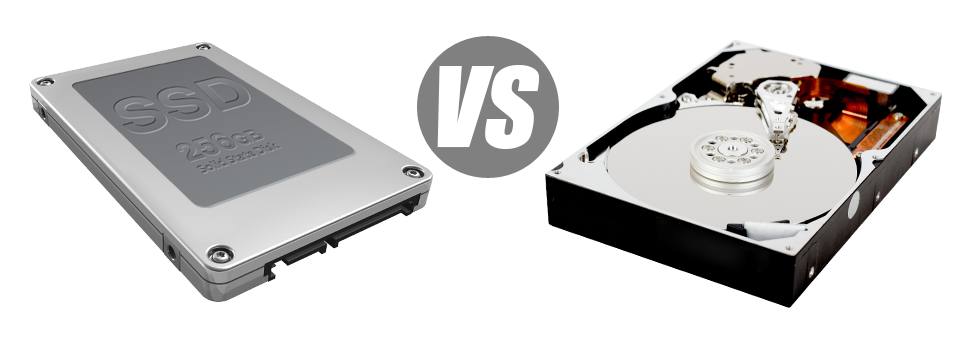For years there was only 1 reputable option to keep info on a computer – employing a hard disk drive (HDD). On the other hand, this type of technology is actually showing it’s age – hard disk drives are actually loud and sluggish; they can be power–ravenous and frequently produce quite a lot of heat for the duration of intensive operations.
SSD drives, on the contrary, are fast, use up far less energy and tend to be far less hot. They provide a completely new method of file access and data storage and are years ahead of HDDs in terms of file read/write speed, I/O operation and also power efficacy. Find out how HDDs stand up against the more recent SSD drives.
1. Access Time
With the arrival of SSD drives, data accessibility rates have gone over the top. On account of the brand new electronic interfaces utilized in SSD drives, the normal file access time has shrunk towards a record low of 0.1millisecond.
HDD drives count on rotating disks for files storage applications. Every time a file will be accessed, you need to await the correct disk to reach the appropriate place for the laser to access the data file you want. This results in a typical access speed of 5 to 8 milliseconds.
2. Random I/O Performance
On account of the brand–new revolutionary data file storage strategy embraced by SSDs, they feature a lot quicker data access speeds and better random I/O performance.
During our lab tests, all SSDs demonstrated their ability to deal with at the least 6000 IO’s per second.
With an HDD drive, the I/O performance progressively enhances the more you apply the disk drive. Having said that, as soon as it actually reaches a certain cap, it can’t go swifter. And because of the now–old technology, that I/O cap is a lot lower than what you could find with an SSD.
HDD are only able to go as much as 400 IO’s per second.
3. Reliability
SSD drives are lacking any kind of moving components, which means there is far less machinery in them. And the fewer literally moving parts you can find, the fewer the chances of failure can be.
The common rate of failure of any SSD drive is 0.5%.
Since we already have noted, HDD drives use spinning disks. And anything that takes advantage of a large number of moving elements for extented intervals is more likely to failing.
HDD drives’ regular rate of failure ranges somewhere between 2% and 5%.
4. Energy Conservation
SSD drives operate nearly soundlessly; they don’t make excess warmth; they don’t require more cooling options and also use up considerably less electricity.
Tests have demostrated that the normal electrical power use of an SSD drive is between 2 and 5 watts.
HDD drives are infamous for becoming noisy; they are liable to getting too hot and if you have several disk drives inside a server, you need an additional cooling unit only for them.
As a whole, HDDs consume in between 6 and 15 watts.
5. CPU Power
SSD drives provide for a lot quicker file access speeds, which, in return, permit the processor to finish data file queries much quicker and afterwards to go back to different responsibilities.
The standard I/O hold out for SSD drives is only 1%.
HDD drives permit reduced accessibility rates compared to SSDs do, resulting for the CPU being required to hang around, while saving resources for your HDD to find and give back the requested file.
The regular I/O delay for HDD drives is just about 7%.
6.Input/Output Request Times
Almost all of our completely new machines moved to merely SSD drives. Our very own tests have revealed that using an SSD, the average service time for any I/O request whilst doing a backup stays below 20 ms.
Compared to SSD drives, HDDs offer noticeably slower service rates for input/output requests. In a web server backup, the common service time for any I/O call ranges between 400 and 500 ms.
7. Backup Rates
One more real–life development will be the speed with which the back up is produced. With SSDs, a server back–up today can take no more than 6 hours implementing eTesLa Technologies’s web server–optimized software solutions.
On the flip side, on a hosting server with HDD drives, an identical data backup usually takes three to four times as long to finish. An entire backup of an HDD–powered web server often takes 20 to 24 hours.
With eTesLa Technologies, you will get SSD–driven web hosting solutions at competitive prices. Our shared hosting plans and the Linux VPS services can include SSD drives by default. Get an website hosting account here and experience the way your web sites can become better easily.
Hepsia
- Live Demo
Service guarantees
- Our Virtual Private Servers include no setup fees and work in a stable network delivering 99.9% of uptime. Full root access guaranteed.
Compare our prices
- Easily review the parameters and tools provided by our Virtual Private Servers. Find out exactly which VPS setup offers you precisely what you will need to take care of your dynamic online presence effortlessly.
- Compare our hosting plans
Contact Us
- You are able to get in contact with us 24 hours a day by email or by making use of our extremely–fast ticketing platform. eTesLa Technologies provides a 1–hour response time frame warranty.















